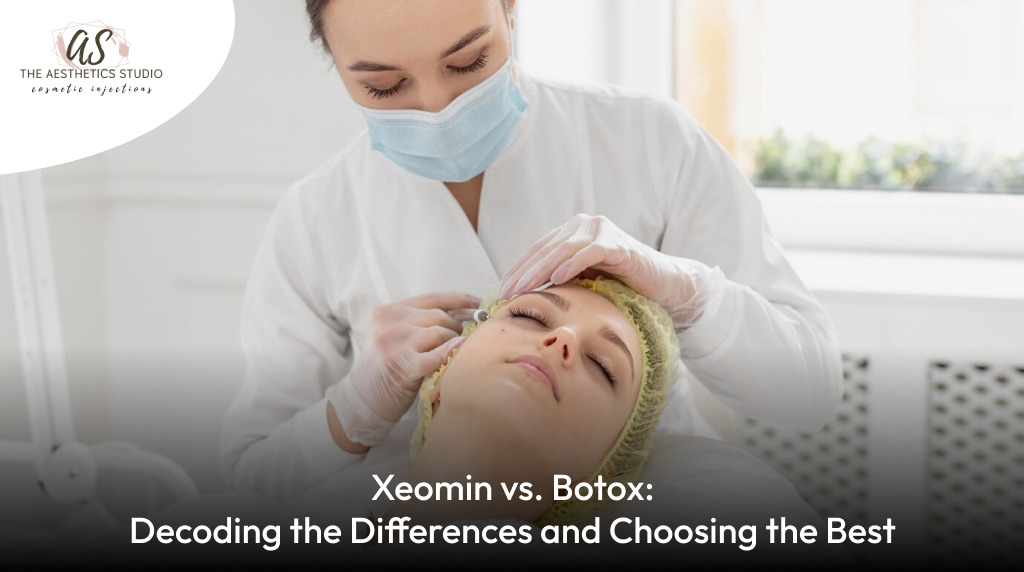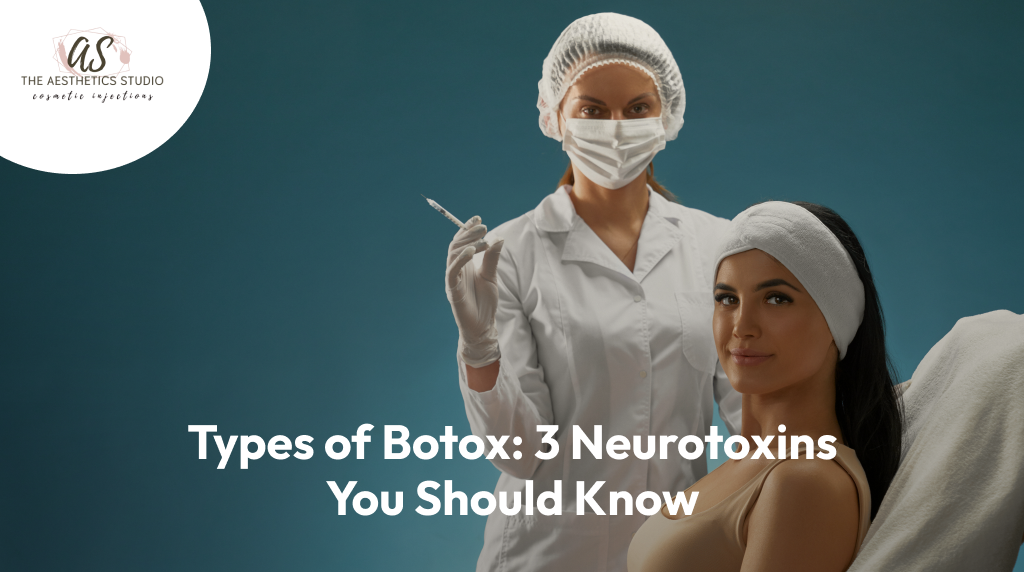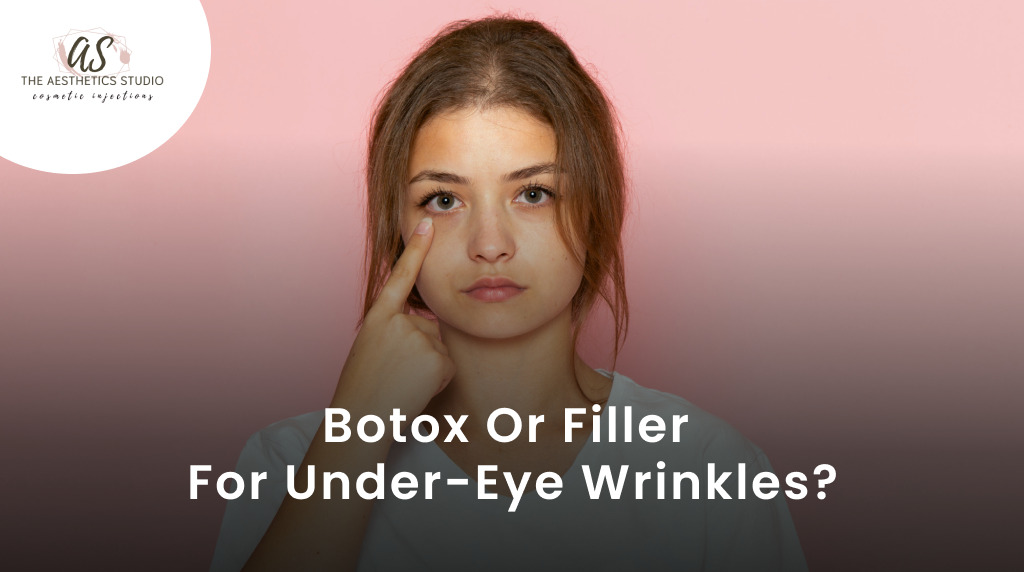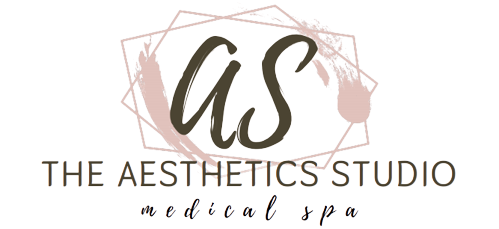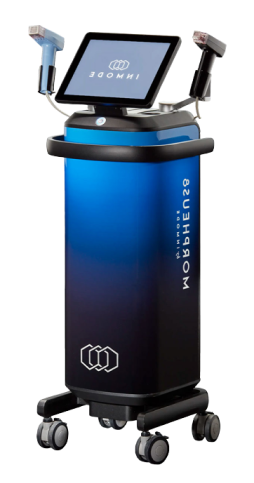If you’re considering anti-aging treatments, you may have heard about Xeomin treatment and Botox treatment. While both are effective in reducing wrinkles and fine lines, they differ in their formulations, duration of effects, and potential side effects.
It’s important to understand these differences to make an informed decision on which treatment is best for you. In this article, we’ll provide an overview of Xeomin treatment and Botox treatment, compare and contrast their features, and provide guidance on selecting the best option for your unique needs.
Key Takeaways
- Xeomin and Botox are both popular anti-aging treatments with unique characteristics.
- Xeomin treatment has a pure formulation with no additives, while Botox contains additional proteins and additives.
- Differences in potency and duration of effects exist between Xeomin and Botox.
- Selecting the best treatment option for you involves considering factors such as cost, desired results, personal preferences, and healthcare professional recommendations.
- Before undergoing either treatment, it’s essential to be informed about safety considerations and potential side effects.
What is Xeomin?
Xeomin is an FDA-approved injectable treatment that is widely used for cosmetic purposes. It is made out of botulinum toxin type A and works to relax specific muscles in the face that cause wrinkles and fine lines. The formulation of Xeomin makes it different from other neurotoxin treatments, such as Botox. Unlike Botox, Xeomin is a “naked” toxin, meaning it does not contain any complex proteins. This makes Xeomin a purer form of the neurotoxin and eliminates the risk of developing antibodies against the protein, leading to treatment resistance.
Some of the key features of Xeomin include:
- Fast-acting treatment
- Long-lasting results
- Safe and effective at treating wrinkles in various areas of the face
Consult with a healthcare professional to determine if Xeomin treatment is right for your aesthetic goals.
Read also: Types of Wrinkle Fillers and Their Differences
What is Botox?
Botox is an FDA-approved cosmetic treatment that has been widely used for over a decade to diminish the appearance of fine lines and wrinkles on the face. It is a neurotoxin that works by temporarily weakening the muscles responsible for causing wrinkles and frown lines. Botox contains the active ingredient known as botulinum toxin type A.
The procedure involves injecting small amounts of the toxin into specific muscles, using a fine needle. The number of injections required depends on the extent of the treatment area and your desired results. The treatment typically takes around 10-15 minutes to perform, with no downtime needed afterward.
Botox treatment is most commonly used to reduce lines on the forehead, between the eyebrows, and around the eyes (crow’s feet). Additionally, it has applications in addressing medical conditions like migraines, uncontrollable sweating, and muscle spasms.
The effects of Botox treatment typically last for around three to six months, after which time the muscles gradually regain their full strength, and wrinkles and lines may begin to reappear. However, after multiple treatments, the effects may last longer.
Differences Between Xeomin and Botox
When it comes to Xeomin treatment and Botox treatment, there are some notable differences worth exploring. One significant difference is the formulation of these treatments. While both Xeomin and Botox are purified proteins that work by blocking the release of chemicals that cause muscles to contract, Xeomin contains only one active ingredient, while Botox has two, making it a complex protein.
Another difference between Xeomin and Botox is their potency. Xeomin has a higher molecular weight than Botox, which means that it may take longer to achieve the desired results. However, Xeomin’s effects may last longer than Botox, making it an attractive option for those looking for longer-lasting results.
| Xeomin | Botox |
|---|---|
| Contains only one active ingredient | Contains two active ingredients, making it a complex protein |
| may take longer to achieve the desired results due to its higher molecular weight | Effects may be seen quicker than Xeomin |
| May last longer than Botox | Effects may last up to 6 months |
| May have fewer potential side effects since it does not contain any additives | May have more potential side effects due to its complex formulation |
Additionally, Xeomin may have fewer potential side effects than Botox due to its lack of additives. However, both treatments come with the risk of adverse reactions like headache, dry mouth, and drooping eyelids. A healthcare professional can help determine which treatment may be the safest and most effective option for you.
Overall, understanding the differences between Xeomin and Botox can help you make an informed decision on which treatment may be best for your specific needs. Your choice will ultimately depend on your individual goals, preferences, and recommendations from your healthcare provider.
Choosing the Best Treatment for You
Deciding on the right treatment options for your anti-aging journey is a personal choice that depends on several factors. The cost of Xeomin treatment and Botox treatment can vary depending on your location and the healthcare professional administering the treatment. It is essential to research and compare prices to make an informed decision.
Another critical factor to consider is the desired results. While both treatments effectively reduce wrinkles and fine lines, individual results may vary. Xeomin treatment may take longer to show its effects, whereas Botox treatment may require more frequent injections to maintain results.
Personal preferences are another aspect to consider. Some individuals prefer Xeomin treatment for its “clean” formulation, free from complex proteins. Meanwhile, others may favor Botox treatment for its more extensive track record and extensive use. Discussing your preferences with a trusted healthcare professional can give you a clearer understanding of which treatment may be the right fit for you.
Lastly, it is crucial to consider recommendations from healthcare professionals. Depending on your medical history and initial consultation, a healthcare professional may recommend one treatment option over the other. Their recommendations should be carefully considered, as they aim to prioritize your safety and health.
Read also: Understanding How Wrinkle Fillers Restore Youthful Skin
Safety and Considerations for Xeomin and Botox
Before undergoing Xeomin treatment or Botox treatment, it’s essential to have a clear understanding of safety considerations. Both treatments have similar precautions, contraindications, and potential risks you should be aware of.
If you have any previous allergic reactions to botulinum toxins injectables or their ingredients, you should not receive either treatment. Additionally, if you have an infectious skin condition around the injection site, you should postpone your treatment.
If you are pregnant, breastfeeding, or planning to become pregnant, it’s crucial to consult with your healthcare provider beforehand, as there have been no studies on the effects of botulinum toxin products on pregnant or breastfeeding women.
It’s also vital to inform your healthcare provider of any medications or supplements you are taking as some drugs may interact negatively with botulinum toxin products and increase the risk of side effects. Additionally, avoid alcohol consumption for 24 hours before and after treatment.
Following injection, you should avoid touching or rubbing the treated area, excessive physical activity, and exposure to high temperatures for 24 hours. Doing so may increase the risk of bleeding or bruising at the injection site.
If you experience any unusual or severe symptoms following treatment, such as difficulty breathing, swallowing, or speaking, seek medical attention immediately.
Stay safe before and after Xeomin treatment or Botox treatment by following your healthcare provider’s instructions and by being an informed patient.
Conclusion
Choosing between Xeomin and Botox for anti-aging treatments can be a difficult decision to make. By understanding the differences between the two treatments and considering various factors such as cost, desired results, personal preferences, and recommendations from healthcare professionals, you can make an informed decision on which treatment option is the best fit for you. It is important to note that both Xeomin and Botox have their own unique benefits and potential side effects, so it is crucial to consult with a trusted healthcare professional before making a final decision.
Ultimately, the key to achieving the best results is to be well-informed about the safety protocols and considerations associated with each treatment. If you have further questions or concerns, feel free to reach out to The Aesthetics Studio and book your appointment now!
Frequently Asked Questions:
Q1. What is the difference between Xeomin and Botox?
Xeomin and Botox are both neurotoxin treatments used for reducing wrinkles and fine lines. The main difference lies in their formulations. Xeomin contains only one active ingredient, while Botox contains a combination of proteins. Additionally, Xeomin is considered a “naked” neurotoxin because it is free from proteins that may cause an allergic reaction in some individuals.
Q2. How do Xeomin and Botox differ in potency?
The potency of Xeomin and Botox can vary. Xeomin is measured in units, with different potencies available depending on the desired effect. Botox, on the other hand, is measured in “mouse units” and has a predetermined potency for each area of the face. It is important to consult a healthcare professional to determine the appropriate dosage for your specific needs.
Q3. How long do the effects of Xeomin and Botox last?
The duration of effects can differ between Xeomin and Botox. Xeomin typically lasts about three to four months, while Botox can last anywhere from three to six months. Factors such as metabolism, muscle strength, and treatment area can affect the longevity of the treatment. Your healthcare provider can offer more tailored information based on your unique circumstances.
Q4. What side effects might arise from the use of Xeomin and Botox?
Common side effects of both Xeomin and Botox include temporary redness, swelling, and bruising at the injection site. Other possible side effects may include headaches, flu-like symptoms, or muscle weakness. These side effects are usually mild and transient. It is essential to discuss any concerns or medical conditions with your healthcare provider before undergoing treatment.
Q5. How do I choose between Xeomin and Botox?
Selecting the most suitable treatment depends on various factors, including your desired results, personal preferences, and recommendations from healthcare professionals. Cost can also be a consideration, as Xeomin may be more affordable in some cases. Consulting with a healthcare professional who specializes in aesthetic treatments can help guide you in making an informed decision.
Q6. Are Xeomin and Botox safe?
Both Xeomin and Botox are considered safe when administered by trained healthcare professionals. However, as with any medical procedure, there are potential risks and considerations to be aware of. These include potential allergic reactions, contraindications, and precautions for certain medical conditions. It is crucial to disclose your medical history and any medications you are taking to ensure your safety during treatment.



